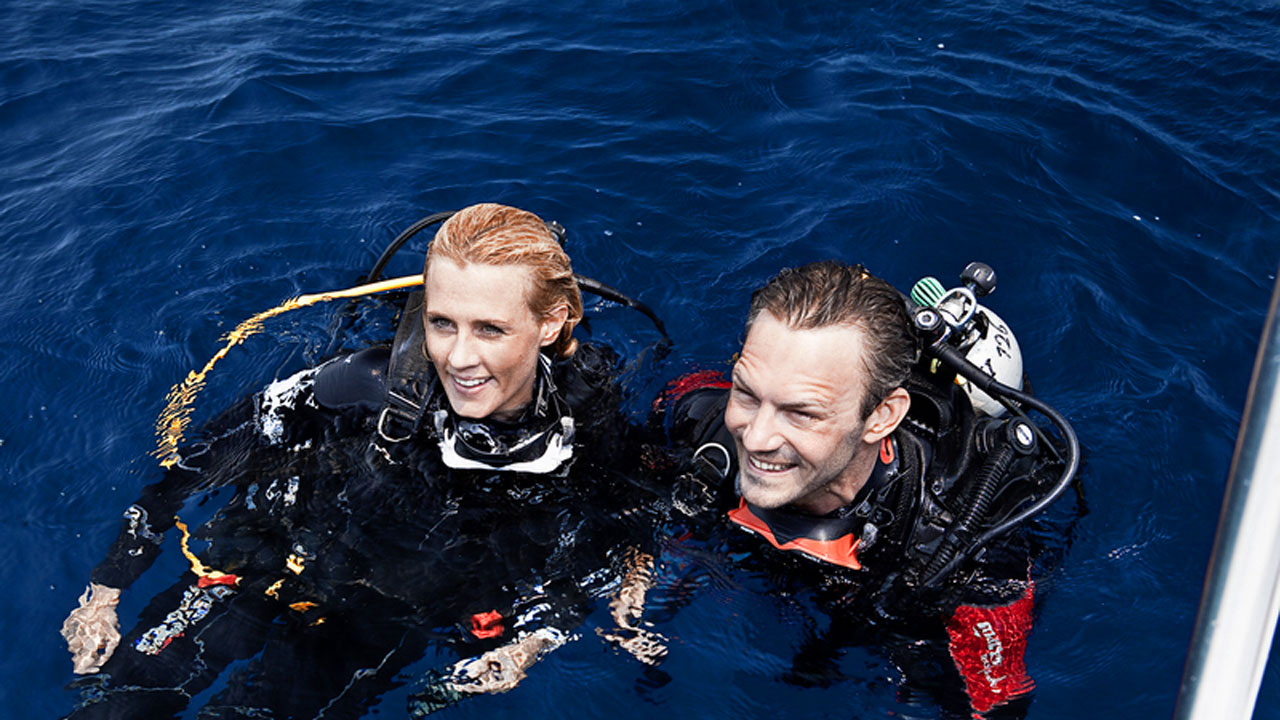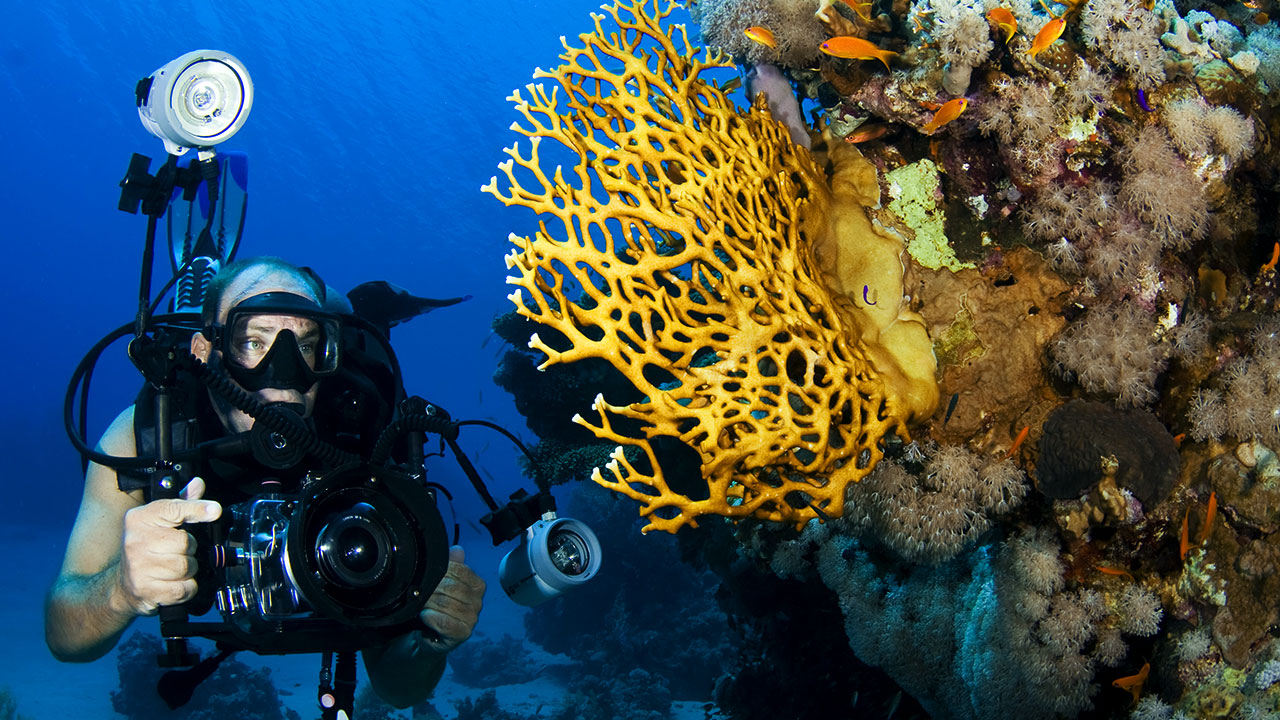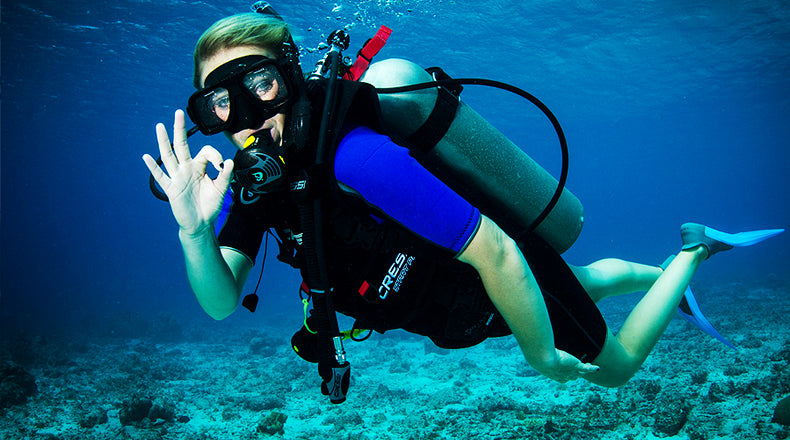10 Helpful Reminders When Diving in Currents

Diving in currents can potentially be one of the most interesting and exciting experiences. Because currents carry plankton, a lot of fish and marine animals that feed on it are drawn to the area, making it a lively dive site to explore. However, currents can also be dangerous, if you are not prepared and trained. Whether you are on a planned drift dive or get caught in a current unexpectedly, there are a few things you need to remember to deal with the situation properly.
1. Plan ahead. Currents have such a large effect on scuba diving conditions, that it is important to not only plan your entry and exit locations ahead of time but also your route and the equipment you will be using. Talk to your dive operator and check whether there are currents on the chosen dive site. In case there are, learn how strong they tend to get. In some cases when the dive site has a strong current, it may be better to find an alternate site or postpone the dive to another day with better conditions.
2. Consider drift diving. In mild currents, scuba divers often employ the technique of drift diving. Although it requires extra planning, this method basically entails entering the water at one point and just drifting with the current downstream. For that, however, you would need to appoint a reliable surface supervisor, who would be able to spot the divers on the surface and bring the boat around for retrieval. You should also trail a surface float and carry a signaling device, such as a safety sausage and/or a whistle. This will help the boat crew to keep track of the group during the dive and spot you, should you separate from the group and have to surface.
3. It is easier to swim down current than it is to swim up the current. When planning a drift dive, keep in mind, which way the noticeable current is headed. Swimming against the current requires more energy and air and can lead to muscle exhaustion. On the other hand, if you are accidentally caught in current during the dive and want to escape it, swim against it as hard as you can. Even if you are not making much progress, this will still prevent you from being quickly carried in the wrong direction. Remember, it is best to move on a diagonal, as it will allow you to fight the current without using as much energy, as you would if you tried to swim directly against it.
4. Currents vary depending on different environmental factors. Currents on the depth are different from surface currents. The latter ones are dependent on the wind, and often disappear as you descend. The speed and direction of the currents on different depths may also vary. All of this needs to be taken into account when planning a dive.
5. Currents can switch direction even during the dive. There are quite a few different kinds of currents. Tidal currents, however, change based on the moon’s gravitational pull. After the flood current, the ebb will basically switch direction.
6. Pay extra attention to navigation. Currents can cause confusion and disrupt navigation underwater. If you are planning on allowing the current to carry you to your exit point, you need to be aware of the speed it is traveling with. It is very easy to miss your exit if you are not completely aware of how fast you are being carried.
7. Navigating with a compass is not reliable when swimming at an angle within the current. Even if you think you are swimming a straight line, the current will push you diagonally away from your attempted route.
8. Kick strokes should not be used to estimate distance traveled through a current. You will not be propelled as far as usual using a kick stroke when swimming against the current. Conversely, when swimming with the current, you will achieve a greater distance than usual.
9. Currents are slowest just above their bottom point. If you find yourself having to swim against the current, staying closer towards the bottom is generally easiest.
10. Your equipment is not exempt from the effects of a current. Additional pressure caused by the current can affect your snorkel or your scuba regulator. Streamline yourself as much as possible. Tuck up your dangling gauges and regulators, hold your camera flush to the back of your thigh, place your arms along the sides of your body and stay low near the reef as you swim into current. This will decrease the drag and therefore minimize effort. It is also common for divers to add extra weight to their gear to help balance the lifting effect that currents present.





Great insights on diving in currents! Understanding how to navigate them is crucial for safety and enjoyment. Your tips on positioning and using the current to your advantage are especially helpful. It’s always exciting to explore new environments, and being prepared makes all the difference. Thanks for sharing these valuable skills!